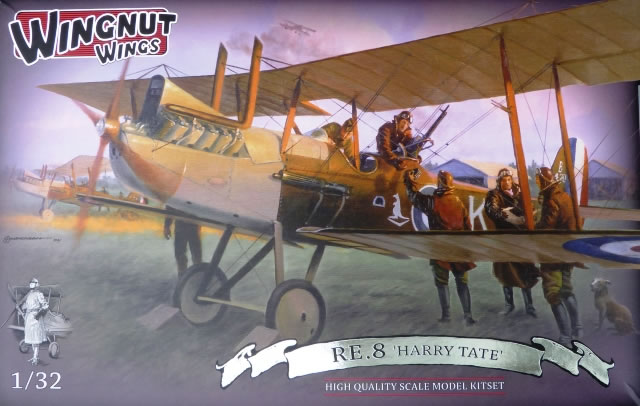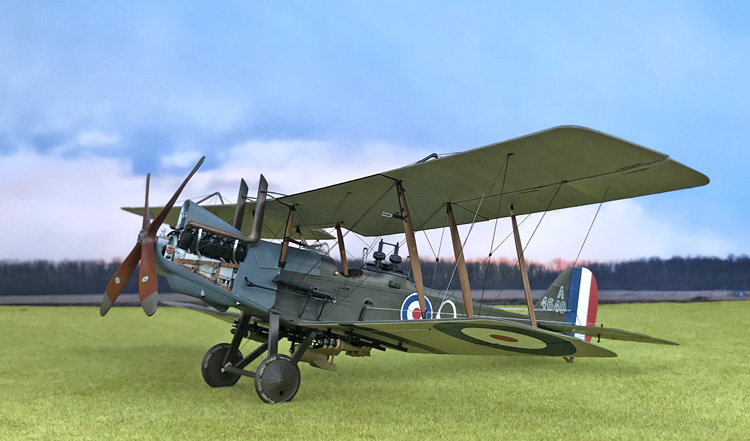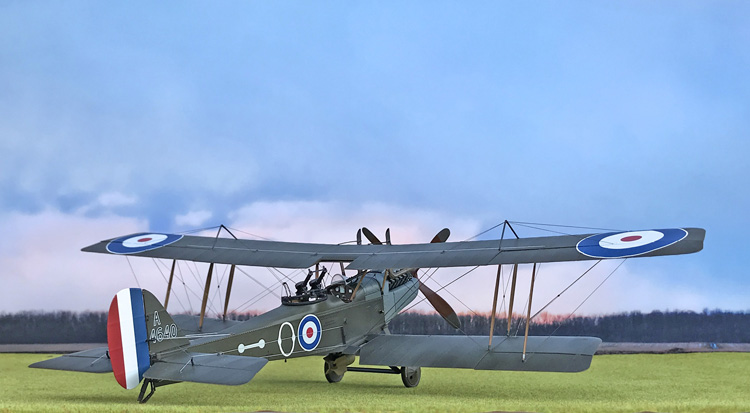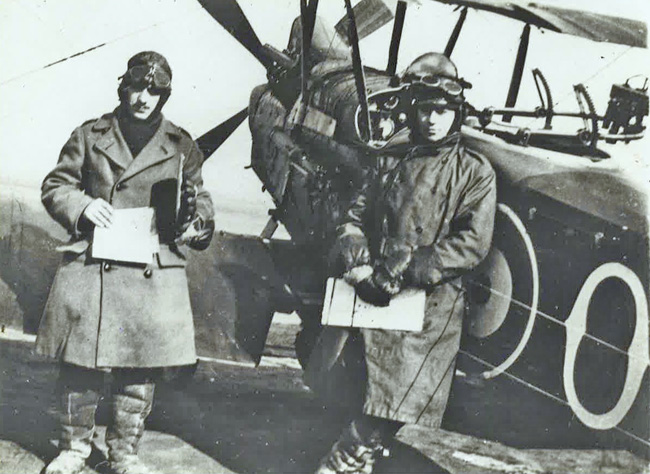
(unfortunately out of Production at this time)
Feature Article by Dave Coward
A note from Geoff…
This is going to be a really interesting build for you all, mainly because of the personal perspectives that dave will shortly explain and for me that means this feature carries great significance. It represents perhaps rather more than a scale modelling project, good as that is and whenever we can bring some historic reference, story and background that is unique in some way I am delighted that we can facilitate this.
So… Dave will take you through the whole fascinating story and we are delighted and proud to be able to include some personal memorabilia and unique photographs from Tim – thanks so much for allowing us to include such valuable correspondence Tim. I hope you like how this whole project has turned out?
Here are a couple of photos of Dave’s completed project right up front – how nice is this…


Background
Plans for the RAF RE.8 (Royal Aircraft Factory Reconnaissance Experimental 8) were drawn up in late 1915 as a replacement for the pre-war lineage BE series of two seaters. Utilising many components from the BE.2e such as wings, undercarriage and tailplanes, the main design difference of the RE.8 was the addition of a forward firing machine gun for the pilot and moving the passenger (observer-gunner) to the rear of the pilot. On the BE.2 series the passenger was placed in front of the pilot between the centre section struts where, with the propeller in front of him, pilot to the rear, wings above and below and struts all around him, he had a devil of a job performing his observation and gunnery duties.
Much maligned because of its quirky looks (not one bit of the RE.8 appears to point in the direction of flight), apparent lack of performance and, according to various reports, because it was too stable or unstable (too stable to adequately defend itself or too unstable to perform low level turns), the RE.8 nevertheless performed its intended tasks of bomber, reconnaissance and artillery spotting with rugged dependability through to the end of the Great War. Aircrew quickly gave it the affectionate nickname ‘Harry Tate’, RE.8 rhyming well with the popular Scottish music hall comedian’s name and, possibly, because of its similarly comic appearance. Built in large numbers by various contractors the RE.8 entered front line service with 52 Sqn in late 1916 and despite a career not entirely free of controversy, it remained in production and front line service until the armistice. In the hands of a confident aircrew that flew it aggressively, the RE.8 could defend itself almost as well as the great Bristol Fighter.
What a story…
With the above introduction to the actual aircraft I now tell you the background to this build. I wouldn’t normally have done a review of this particular build for two reasons; firstly, its already been done for the magazine (see Les V’s impressive build) and secondly the kit went out of production in 2014 and is now very difficult to find and if you do find one you will pay a premium for it. The reason why I did choose to write this up is the background to the build that is so interesting.
The original reason for the build came from a conversation with someone who I was selling some of my model collection to. Tim, the person in question, happened to mention to me that his Grandfather flew RE.8s in WW1 and he would love to have a model of one. I did mention that there were a couple of options out there – the best of which being the Wingnut Wings kit but this was very rare to find these days and that it would cost him a premium if he could find one at all. If he did manage to get hold of one he asked if I would make it for him and that he had some photos of his grandfather next to his aircraft and some other info about him.
Anyway, a couple of days later Tim contacted me to say he had sourced a Wingnut’s RE.8 and would I make it. This I couldn’t resist as I do like a good background to a project and this sounded right up my street. Some further correspondence with him really got me into this project as the information he gave me really intrigued me.
To give you a taste he told me the following:
“I know my grandfather was in 21 Squadron in 1917 and flew A4640. Unfortunately for me he gave most of his log books etc to the IWM or his cousin but I have some pictures and extracts from his diary so I’ll dig them out. I still remember sitting with him listening to his experiences including being shot down and crashing in no man’s land, crash landing when hitting mud which flipped the aircraft and killed his gunner and seeing the Red Baron and his flying circus and not being attacked as the British fighters held them off. He admitted his knees were knocking together in fear which is hardly surprising!!
I found this picture of him and his gunner/observer off on a ‘shoot’ over Passchendale in October 1917. He’s on the left and I believe the chap on the right was called Vandyk and broke his neck when the RE.8 turned over hitting mud coming in to land after a sortie! I don’t have the logbook so I don’t know the aircraft details but I definitely know the details I gave to you before are accurate”.

Tim subsequently found some typed memories which he kindly forward to me along with another picture of his Grandfather which are fascinating. Download the PDFs below:
Document One
With this information, I decided to do a bit of digging to find out more about Tim’s Grandfather, his Sqn and his aircraft.